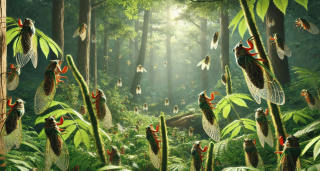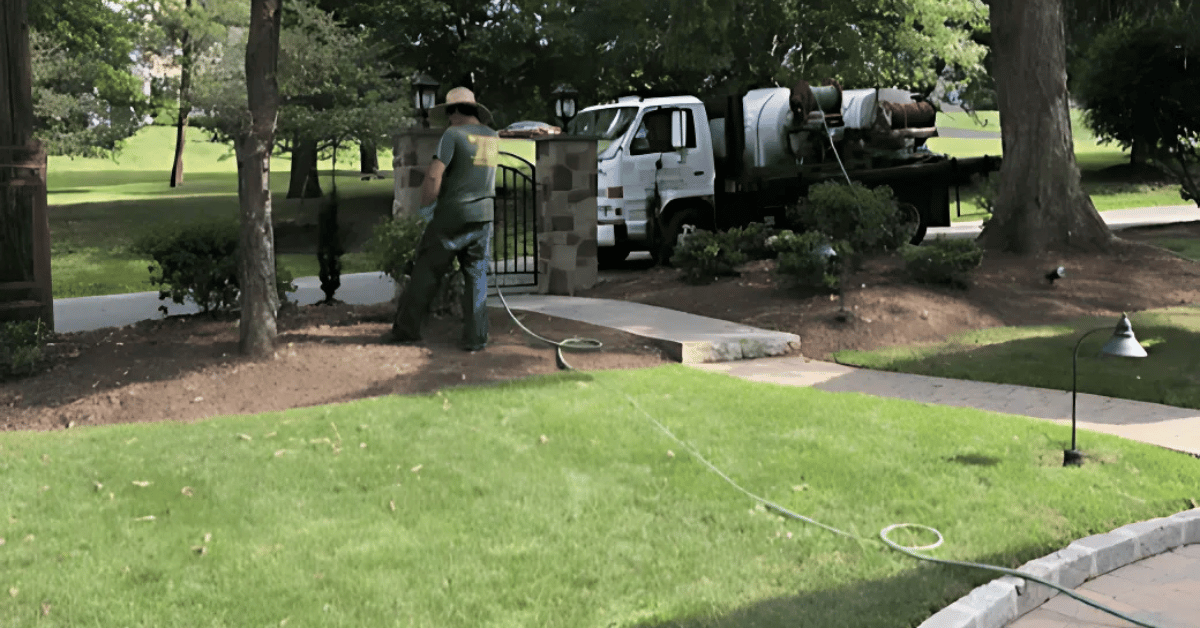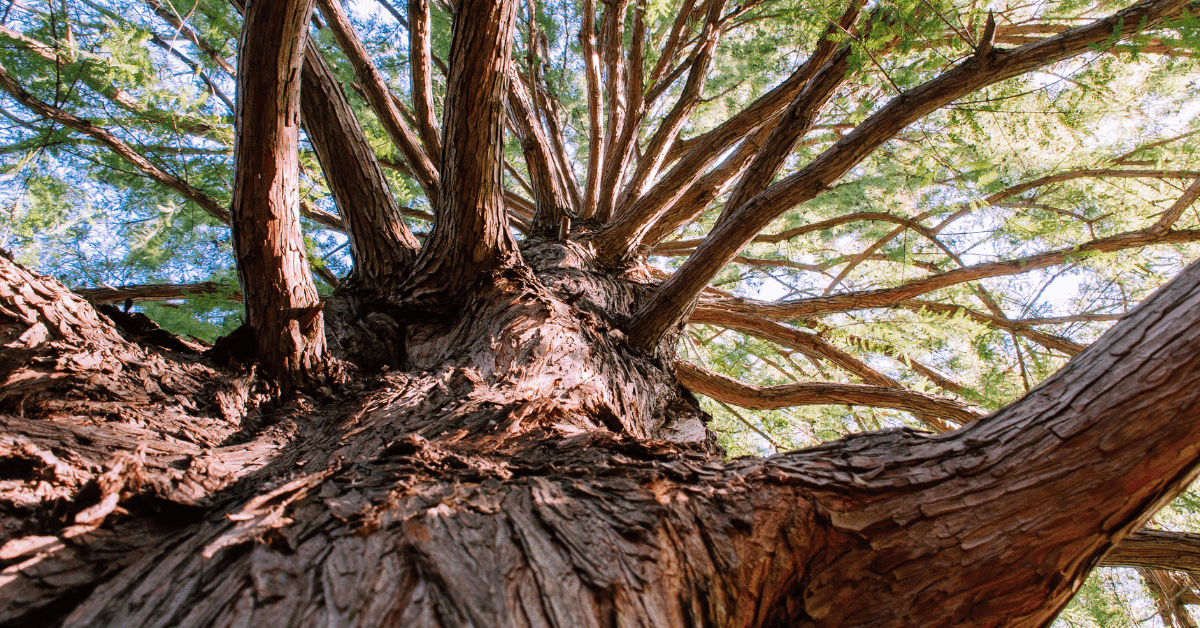Cicadas are noisy insects that appear every few years. Many homeowners worry about their trees and plants when cicadas arrive. While they don’t eat plants the way other pests do, cicadas can still cause damage to trees. Knowing their habits and taking action can help protect your trees.
Cicada Nymphs
Cicadas start as nymphs. These are the immature stages of the insect. These nymphs live underground for years, sometimes 13 to 17 years, feeding on tree roots for nutrients. They suck sap from roots but usually do not harm healthy trees. However, if too many nymphs are on young trees, the roots may weaken over time. This can slow growth or even kill very small trees.
Cicada Diet
Do cicadas eat plants? Not exactly. Adult cicadas feed on tree sap. They use a needle-like mouthpart to pierce branches and suck the sap out. This feeding does not usually harm mature trees.
The real damage comes from their egg-laying process. Female cicadas cut small slits in tree branches to lay eggs. These slits can weaken branches, causing them to break or die. Young trees with thin branches are most at risk.
Non-food Items
Cicadas are not like other insects that chew leaves, flowers, or stems. Unlike beetles, caterpillars, or aphids, cicadas don’t munch on fruits, vegetables, or garden plants. They don’t cause the kind of leaf holes, wilting, or stunted growth you might see from other garden pests. Instead, cicadas rely on trees as their main source of food and as a place to lay eggs.
Cicadas target tree branches for sap and egg-laying. Female cicadas slice into thin branches to deposit eggs, which can harm smaller or younger trees. Mature trees can usually handle the stress, but fruit trees, ornamental trees, and saplings are more vulnerable.
This is good news for gardeners. Your flowers, vegetables, and most shrubs are safe from cicadas. You don’t need to worry about them damaging your garden beds. However, if you have young trees or delicate fruit-bearing trees, it’s important to take protective steps to keep them safe.
Cicada vs. Locust
Many people confuse cicadas with locusts. While they look similar, they are very different insects.
- Cicadas: Feed on sap and lay eggs in branches. They do not eat leaves or crops.
- Locusts: Eat leaves, plants, and crops. They can destroy entire fields.
If you see cicadas in your yard, don’t panic. They are not locusts and will not ruin your plants.
How to Stop Cicada Tree Damage
Protecting your trees from cicadas is key. Here are steps you can take:
- Wrap Young Trees: Use mesh or netting to wrap young trees. Make sure the holes in the mesh are smaller than a quarter inch. This keeps cicadas from reaching branches to lay eggs.
- Trim Trees: Prune weak or dead branches before cicada season. This prevents branches from breaking when cicadas lay eggs.
- Delay Planting: If you plan to plant new trees, wait until after cicadas leave. Young trees are the most vulnerable to damage.
- Keep Trees Healthy: Healthy trees can recover from cicada damage. Water them well and add mulch around the base. This supports root growth and overall health.
When Will the Cicadas Go Away?
Cicadas only stay above ground for a short time. Adult cicadas emerge, mate, and lay eggs within 4 to 6 weeks. After that, they die.
If cicadas have appeared in your yard, they will be gone by mid to late summer. However, the damage they cause may remain. It’s important to check your trees and take steps to repair any harm.
How Can I Keep Cicadas Off Trees?
Here are simple tips to keep cicadas away from your trees:
- Use Netting: Cover small or young trees with netting. This prevents females from laying eggs.
- Spray Water: A strong spray from a hose can knock cicadas off trees. This is temporary but helpful.
- Avoid Pesticides: Pesticides are not effective against cicadas. They are also harmful to other beneficial insects.
- Monitor Daily: Check your trees often. If you see cicadas gathering, act quickly to protect the branches.
Cicadas Have Already Damaged My Trees. Anything I Can Do?
If cicadas have damaged your trees, don’t worry. Many trees can recover with care.
- Prune Damaged Branches: Remove broken or dead branches. This helps trees focus energy on healthy growth.
- Water Trees: Give trees extra water, especially during dry periods. Proper hydration speeds up recovery.
- Add Mulch: Spread mulch around the base of the tree. This protects the roots and improves soil moisture.
- Fertilize if Needed: Young or stressed trees may benefit from light fertilization.
- Call a Professional: If damage is severe, contact a certified arborist. They can assess the tree’s health and recommend the best steps.
Contact Strobert Tree Services
Cicadas can be annoying, but they don’t have to ruin your yard. With the right care, your trees can stay healthy and strong. If you’re not sure what to do, our team of certified arborists is ready to help.
At Strobert Tree Services, we check trees for damage, trim broken branches, and make sure your trees are in good shape. If cicadas have already caused problems, we’ll figure out the best way to fix it.
Don’t let cicadas stress you out. They won’t be around for long, and your trees can bounce back with a little care. Contact us today, and we’ll make sure your trees stay healthy long after the cicadas are gone.
Conclusion
So, do cicadas eat plants? Not really. They feed on tree sap and lay eggs in branches, which can cause harm to trees. With proper care and protection, you can minimize cicada damage and keep your trees thriving.
If cicadas are causing trouble, contact Strobert Tree Services. Our team has the expertise to protect your trees and help them recover. Let’s keep your yard beautiful, healthy, and cicada-free!











